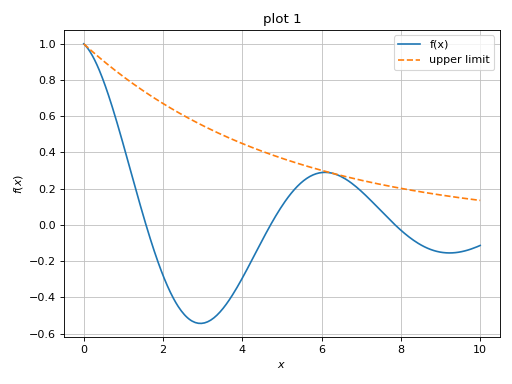1 - Combining plots
Let’s understand what happens when a plot command is executed:
from sympy import *
from spb import *
var("x")
p = plot(sin(x), cos(x), log(x), backend=MB)
(Source code, png, hires.png, pdf)
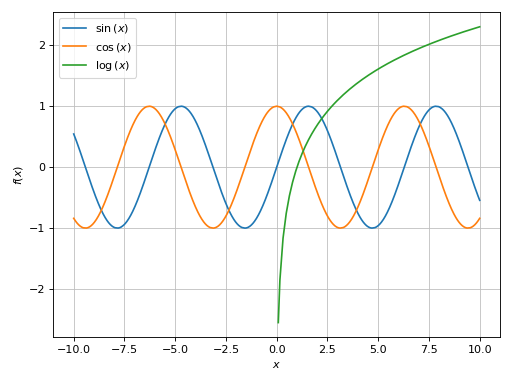
The plot function is going to loop over the provided arguments: it will create
and store one data series for each expression. So, in the previous example
p contains 3 data series. Once the data series are created, they will be
used by the backend (the wrapper to the plotting library) to generate
numerical data.
Effectively, p is a container of data series. We can quickly visualize
them by printing the plot object:
>>> print(p)
Plot object containing:
[0]: cartesian line: sin(x) for x over (-10.0, 10.0)
[1]: cartesian line: cos(x) for x over (-10.0, 10.0)
[2]: cartesian line: log(x) for x over (-10.0, 10.0)
We can retrieve a list containing all data series from a plot object by
calling the series attribute:
p.series
Alternatively, we can retrieve a single data series by indexing the plot object:
>>> print(p[0])
cartesian line: sin(x) for x over (-10.0, 10.0)
We can combine multiple plots together in two ways:
summing them up: this will create a new plot containing all data series from all initial plots. For example:
c = S(2) / 10 p1 = plot(cos(x) * exp(-c * x), (x, 0, 10), "f(x)", title="plot 1") p2 = plot( (exp(-c * x), "upper limit"), (-exp(-c * x), "lower limit"), (x, 0, 10), {"linestyle": "--"}, title="plot 2", xlabel="xx", ylabel="yy")
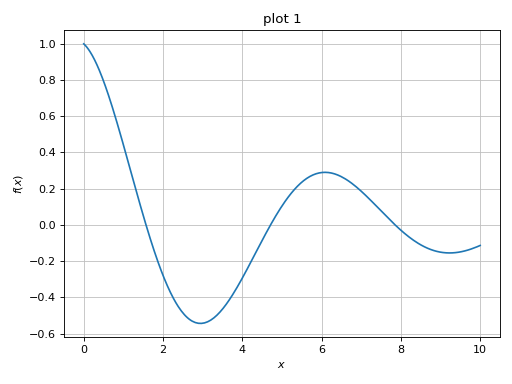
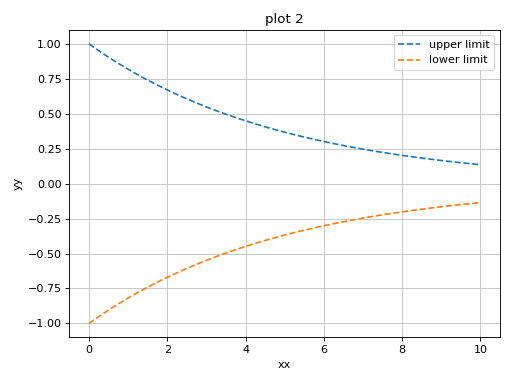
And then:
p3 = p1 + p2 p3.show() # or more quickly: (p1 + p2).show()
(Source code, png, hires.png, pdf)
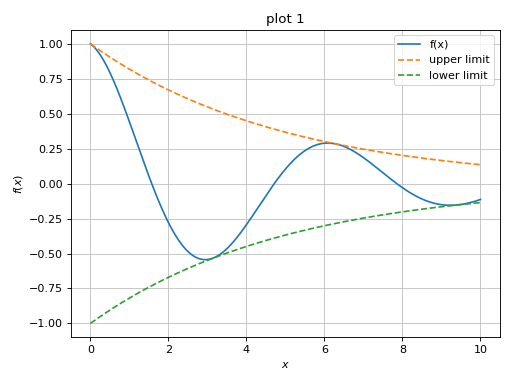
Note that the final plot uses the keyword arguments of the left-most plot in the summation. In the previous example, the resulting plot has the title of
p1. Now, let’s sum them up in a different order:(p2 + p1).show()
(Source code, png, hires.png, pdf)
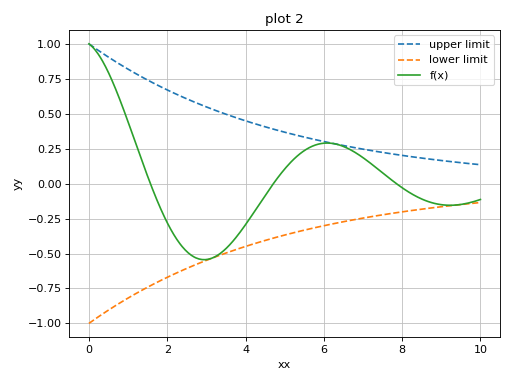
Here, the resulting plot is using the title and axis labels of
p2.using the
appendmethod to append one specific data series from one plot object to another. For example:>>> p1.append(p2[0]) >>> print(p1) Plot object containing: [0]: cartesian line: exp(-x/5)*cos(x) for x over (0.0, 10.0) [1]: cartesian line: exp(-x/5) for x over (0.0, 10.0) >>> p1.show()
(Source code, png, hires.png, pdf)
